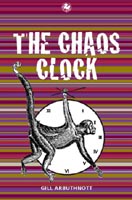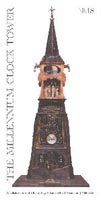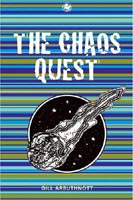Museum of Scotland
Tales of the Unexpected
 The sort of stories I’ve always liked to read have plenty of twists and turns in the plot. No doubt that immediately marks me out as low brow, but I don’t care. I love a good page turner so it seems only fitting that the start of my writing career has had its share of unforeseen incidents as well.
The sort of stories I’ve always liked to read have plenty of twists and turns in the plot. No doubt that immediately marks me out as low brow, but I don’t care. I love a good page turner so it seems only fitting that the start of my writing career has had its share of unforeseen incidents as well.
The first and most unexpected thing to happen was that I wrote a children’s book at all. I still don’t know exactly how it happened. I’d been writing secretly since primary school; seriously for about ten years, during which time I’d completed one fantasy and one science fiction novel – both for adults – and half-written three or four other things.
I was stuck about 20000 words into another science fiction story when I first saw the Millennium Clock in the Royal Scottish Museum in Edinburgh. It’s an extraordinary construction, stories leaking out of it in every direction. Not children’s stories though. Not when you look at it properly. Despite the Nursery and Primary classes who sit cross-legged waiting for it to erupt into performance, it is definitely not a children’s clock. The imagery is much too dark; Stalin, Hitler, the Holocaust – all sorts of depictions of terrible inhumanity.
So then; no intention of writing for children, an X rated source of inspiration, and I end up writing a children’s book?
 No, I don’t know exactly how either, but the stew of ideas turned into the Chaos Clock.
No, I don’t know exactly how either, but the stew of ideas turned into the Chaos Clock.
The second unexpected thing was, of course, getting published.
Like any other would-be author who’d been at it for ten years, I already had a fine collection of rejection slips. I didn’t even know who to send this book to, not being, in my mind, a children’s author.
The only thing that I could think to do with Chaos Clock was send it off to Canongate and suggest it for the Kelpies list, which I at least knew was for children, and Scottish. What I hadn’t realised was that Canongate had pulled out of children’s books, so when it bounced back by return post I was stumped, and Chaos Clock went into the Bottom Drawer to die quietly.
However (well, come on, you knew there must be a however), a few months later in the Scotsman there was a reference to the Kelpies list having been taken over by Floris Books, by a bizarre coincidence only a brisk fifteen minute walk from my house. I sent off the first three chapters and waited. And waited. And waited. And moved house. And opened the mail the very next morning – life in a big heap of cardboard boxes in the middle of the floor – and found a letter from Floris saying they’d liked the first three chapters and could they see the rest?
You can probably imagine the scrabbling through boxes that ensued as I tried to find the computer, the printer, the disc, the paper…
Obviously I did, and obviously Floris (eventually) decided they liked Chaos Clock enough to publish it. This necessitated a sort of formal ‘coming out’ on my part. I’d always been a very secretive writer – my husband didn’t know about my guilty habit for years, and neither my parents nor children knew until I got the offer of publication.
One interesting effect of coming clean was the number of people I knew – some of them quite well – who sidled up to me and admitted in an embarrassed whisper that they too were secret scribblers.
Why are we all so ashamed of this side of our lives? You’d think we were admitting to a drug addiction.
Of course, we are addicts. Nothing else but compulsion can explain why people do this. It’s certainly not for the vast monetary rewards – there aren’t any for most of us, and for those who do get published, the rewards are still (mostly) pretty paltry. That’s not a complaint, you understand, just recognition of reality. Unfortunately, a lot of non-writers seem to think that everyone who gets into print automatically acquires an income roughly the same size as JKR’s.
Okay, that’s two unexpecteds, but as you know, things in stories generally come in threes.
The third unexpected event was appearing on the Book Collector radar. Now, I must have known, in some backwater of my brain, that there are people who collect books as an investment, but that’s not a compulsion I share, so I’d never given it any extended thought.
Chaos Clock came out in October 2003, got a couple of good reviews, and sold steadily until just after that Christmas, when the publishers started getting requests for signed copies; a few at a time at first, then by the dozen, then by the hundred. This came as almost as much of a surprise to Floris as it did to me, and they had to sit me down and break it to me gently that it didn’t normally happen. Then came the requests for ‘signed and lined’ copies, and then it got really bizarre – people wanting doodles, dates…
 Well, a sale’s a sale. Why would I not do it? So I dutifully signed hundreds of copies, and learned that there’s a correct way to date a book for the American market… It was an interesting learning curve.
Well, a sale’s a sale. Why would I not do it? So I dutifully signed hundreds of copies, and learned that there’s a correct way to date a book for the American market… It was an interesting learning curve.
I did draw the line at the dealer who wanted a dozen copies, signed, lined and numbered one to twelve, each with a unique doodle to represent a month of the year (all to be done for nothing of course, out of the goodness of my heart).
Yeah, right, as my daughter would say, and while I’m at it I’ll have ‘I am a sucker’ tattooed across my head.
Things got seriously out of hand when signed copies started appearing on eBay and going for crazy sums of money. I’d signed so many that I reckon the seller who advertised an unsigned copy of the first printing claiming it would be rarer and more valuable that the signed ones might well have been right! I was also interested to find how many people assumed that I, as the author, must be doing quite well out of all this.
How did I feel about it all? Pretty ambivalent actually. I was delighted that the first print run was selling out so quickly, but I didn’t, and still don’t, like to think of my poor books languishing somewhere unread; and while I don’t have a problem with the idea per se of someone buying and selling books as a gamble/investment I have spoken to several people who genuinely find it morally repugnant. It was an enormous ego trip of course, reading all the complimentary things sellers were saying about me on the web, but then they would, wouldn’t they? I only had to look at the slating Chaos Clock had been given by a merciless school pupil in Teen Titles to get a grip on reality again!
Panic set in when the Scotsman decided to interview me about the eBay phenomenon and it came out under the headline ‘Shock sell-out for new Potter’. That was it: my fledgling career as a children’s writer was dead in the water.
Strange reaction? Not at all. How many of these ‘next Rowling/Pullman/Tolkien’ or ‘Unknown author wins six figure advance’ headlines have you seen? And how many of the featured authors have you ever heard of again?
Exactly.
There were a couple of voices of sanity in among all this however. One was Mark Lambert of Scottish Book Trust who sensibly pointed out in the same Scotsman article that ‘the books were not published for the dealers. They were written for children to read… My advice to the public would be to wait for the second print run to buy a copy.’ The other was a major Edinburgh book shop that stopped sending multiple copies of the first printing to dealers and instead slipped them onto the shelves among the second printing a few weeks later ‘so that real people could buy them.’
I’m not saying which book shop, just in case…
Then there was the creepy discovery that someone I knew vaguely was advertising signed copies (which I had certainly never signed for him) together with ‘candid photos’ presumably taken surreptitiously with a camera phone. Yeuch! At least I managed to get that removed pretty quickly from eBay.
So, two and a half years on, what do I think about it all now?
 Well, fortunately my career didn’t hit the buffers as I’d assumed it would. The second and third print runs of Chaos Clock have continued to sell to readers, now that the collecting furore has died down. The sequel, Chaos Quest, was published in September 2004 and received the same sort of response, but at least Floris and I were a bit more prepared for it. The first printing of that sold out in a few weeks too, but collector interest seemed to die down fairly swiftly after that.
Well, fortunately my career didn’t hit the buffers as I’d assumed it would. The second and third print runs of Chaos Clock have continued to sell to readers, now that the collecting furore has died down. The sequel, Chaos Quest, was published in September 2004 and received the same sort of response, but at least Floris and I were a bit more prepared for it. The first printing of that sold out in a few weeks too, but collector interest seemed to die down fairly swiftly after that.
Not completely though: I had a look on the Abebooks site a couple of weeks ago and there were still quite a few Chaos books around. I was most intrigued to read variously that:
a) They were privately published.
b) They are the first two volumes in a trilogy/multi volume series.
c) I had signed them in fountain pen.
d) Signing them had exhausted me.
Apparently I’m not the only one creating fantasy here. Just for the record:
a) Floris published the books, not me.
b) There are only going to be the two Chaos books. That’s it. No more.
c) I have terrible writing and haven’t used a fountain pen since primary.
d) Oh come on!
 What next? My third children’s novel – Winterbringers – will go on sale at the Edinburgh International Book Festival in August, and will be launched officially in the East Neuk of Fife, where it’s set, sometime in the autumn. It isn’t another Chaos book; it’s a stand alone fantasy about witches and global warming (which is nothing at all to do with carbon dioxide emissions in my version of reality…). I’ve no idea if Winterbringers will interest book collectors – I just hope it interests the people it was written for. Anyway, I’m happy to sign it for anyone, but I still won’t be using a fountain pen.
What next? My third children’s novel – Winterbringers – will go on sale at the Edinburgh International Book Festival in August, and will be launched officially in the East Neuk of Fife, where it’s set, sometime in the autumn. It isn’t another Chaos book; it’s a stand alone fantasy about witches and global warming (which is nothing at all to do with carbon dioxide emissions in my version of reality…). I’ve no idea if Winterbringers will interest book collectors – I just hope it interests the people it was written for. Anyway, I’m happy to sign it for anyone, but I still won’t be using a fountain pen.
I’m already at work on my next book, though it’ll be quite a while before it’s fit to be seen. In the meantime I’m having a ball, visiting schools, writing articles like this and just waiting for the next twist in the plot…
The Chaos Clock (ISBN 0863154220 £4.99 PBK), The Chaos Quest (ISBN 086315459X £4.99 PBK) and Winterbringers (ISBN 0863155308 £4.99 PBK) are all published by Floris Books in the Kelpies series. The Millennium Clock Tower by Maggy Lenert (ISBN 1901663949 £4.99 PBK) is available from NMS Publishing, through the National Museums of Scotland.
© Gill Arbuthnott 2005

Comments